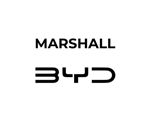So it might come as a surprise that a higher proportion of Audis are supplied to fleet customers than Renaults. Indeed looking at the data in detail shows up some surprising details about what is going on.
There are two ways of looking at the figures: the absolute proportion of sales going into fleets and whether that proportion is going up or down.
To put it as its crudest, if the fleet proportion is both high and rising, or simply rising rapidly, alarm bells would normally ring.
Take the most extreme example: Cadillac went up from a fleet proportion of virtually zero in 2006 to the highest figure in the whole industry in 2007 (64.1%). To put it diplomatically, it seems unlikely that corporate customers have suddenly decided that the BLS is the car to have.
In fact GM is in the unenviable position of having the three brands with the highest fleet proportion in the UK. To GM’s credit, Vauxhall, did reduce its fleet dependence last year thanks to the new Corsa, but it is still ahead of Ford, which is making a public commitment to incrementally reducing its fleet proportion year-by-year.
Interestingly, the Volks-wagen Group seems particularly fleet orientated, with Audi being well above BMW and Mercedes-Benz.
The VW brand with the lowest fleet proportion is Skoda, which does tend to reinforce the stereotype of Skoda having lots of happy retail customers.
If rising fleet sales are a warning signal, what about a falling fleet proportion?
Kia fell from 49% in 2006 to 41% in 2007 which does support the new management’s contention that Kia will no longer force the market.
The biggest fall came from Maybach, of all companies, which reduced its fleet proportion from a bizarre 85% in 2006 to a merely absurd 37% in 2007.
Given that Rolls Royce is on 15%, Maybach seems to have a remarkable appeal to fleet operators.
The Maybach figure demonstrates that there is no right or wrong fleet proportion. It is a question of looking at how it is changing and how it compares to the competition. For example a figure of 59% for Ford is what you would expect, but a figure of 58% for the famously idio-syncratic Subaru model range is pretty worrying – the question, “so what appealed to you about the heavily incentivised Subaru?” does spring to mind.
The more fleet-friendly diesel engine will actually reduce the Subaru fleet proportion in 2008, as Subaru will find it easier to get real buyers for its cars.












Login to comment
Comments
No comments have been made yet.